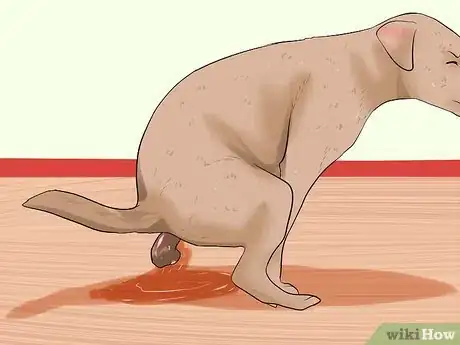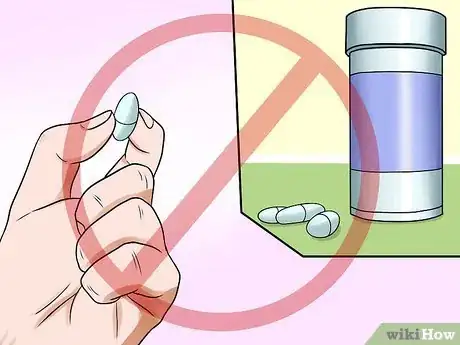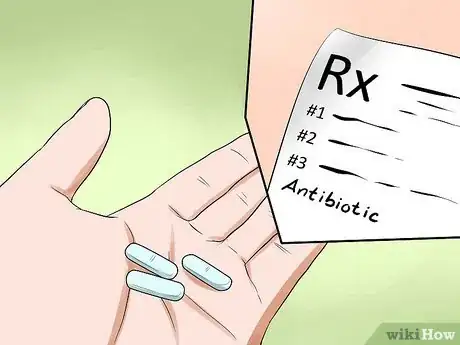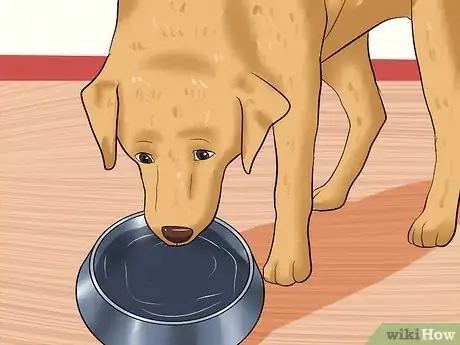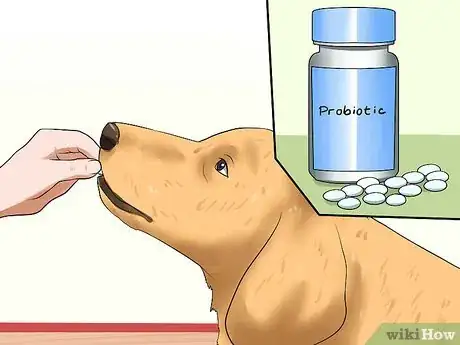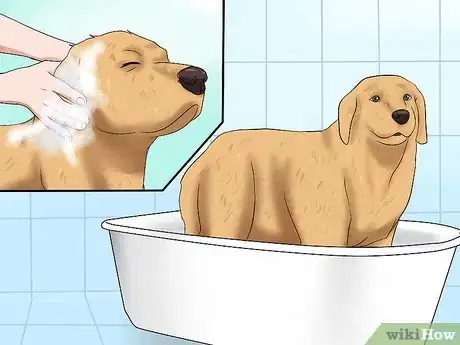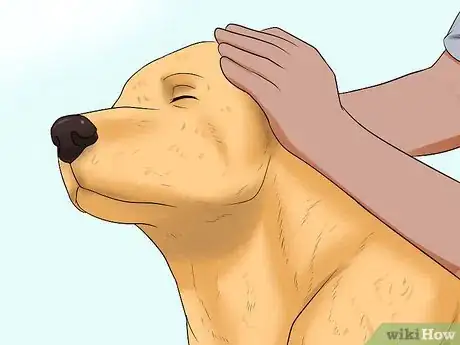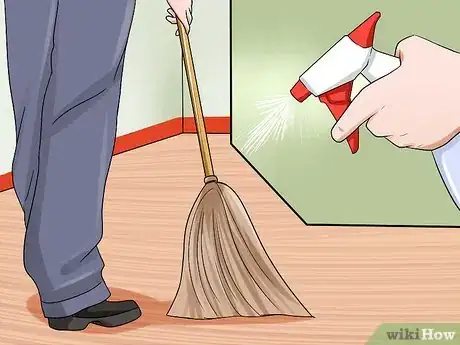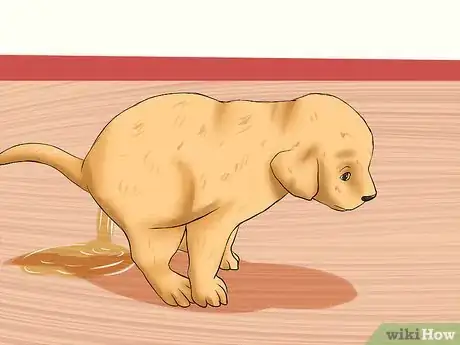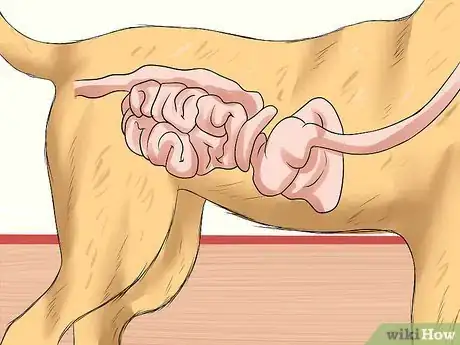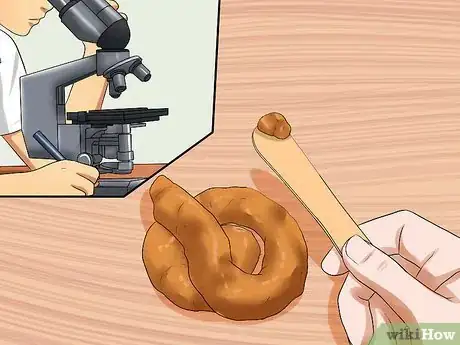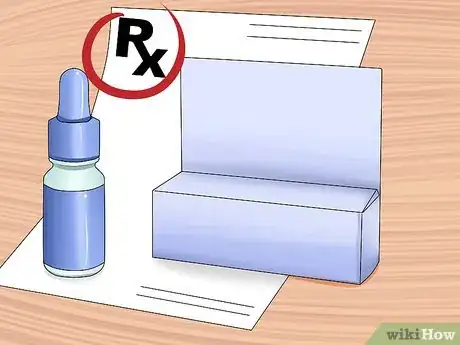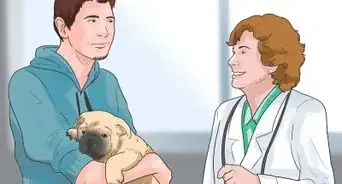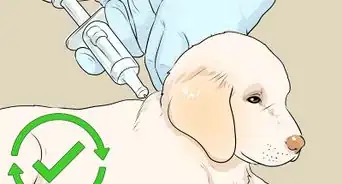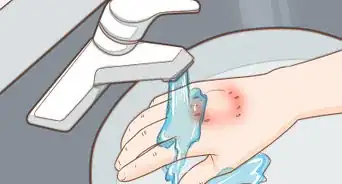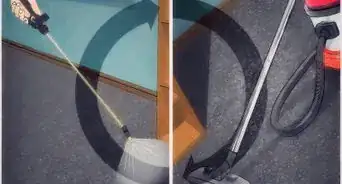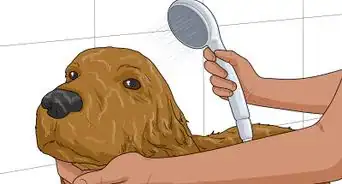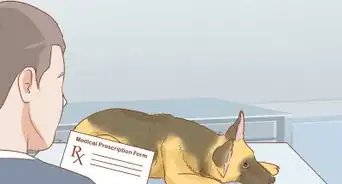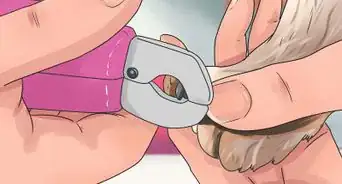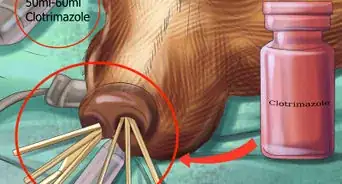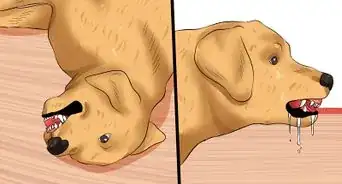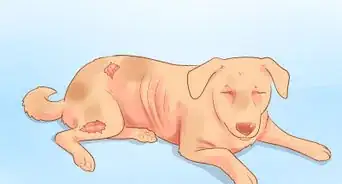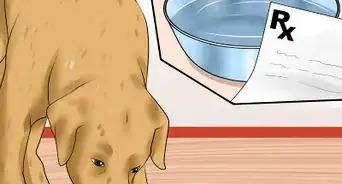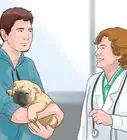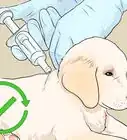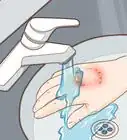This article was co-authored by Pippa Elliott, MRCVS. Dr. Elliott, BVMS, MRCVS is a veterinarian with over 30 years of experience in veterinary surgery and companion animal practice. She graduated from the University of Glasgow in 1987 with a degree in veterinary medicine and surgery. She has worked at the same animal clinic in her hometown for over 20 years.
There are 8 references cited in this article, which can be found at the bottom of the page.
wikiHow marks an article as reader-approved once it receives enough positive feedback. In this case, 96% of readers who voted found the article helpful, earning it our reader-approved status.
This article has been viewed 41,250 times.
Campylobacteriosis is an infection caused by a bacterium called campylobacter. Although diarrhea is a symptom, healthy pets may have campylobacter present in their feces.[1] Campylobacter can also be passed to people. Around 6% of human cases are thought to be the result of infection from dogs.[2] To keep you and other dogs healthy, follow these tips to treat campylobacteriosis.
Steps
Treating Campylobacteriosis
-
1Know the signs. Recognizing the signs of campylobacteriosis is important. As soon as you see symptoms, you need to take your pet to the vet. This helps prevent them from becoming anorexic or dehydrated. The symptoms are:
-
2Let the dog pass the bacteria. The bacteria shouldn’t stay in your dog’s system. It needs to get it out. Because of this, don’t give your dog anti-diarrhea medicine because it will cause the dog to not pass the bacteria.Advertisement
-
3Treat the dog with antibiotics. If the vet has diagnosed your dog with campylobacter, he may prescribe antibiotics. Make sure to give your dog the medicine for at least 21 days. This helps clear the campylobacteriosis so the dog doesn’t become a carrier.[5]
-
4Give your dog fluids. If your dog has bad diarrhea, you should give him fluids to help with the dehydration. Make sure the dog has fresh drinking water. You can include electrolytes in the fluids to help combat the dehydration. In extreme cases, your dog can become so dehydrated he has to be hospitalized and given fluids intravenously.[6]
- Feed the dog a bland diet that is easily digested. Try chicken and rice. Your vet may prescribe a specific for your dog to help him recover and heal.
-
5
-
6Wash your dog carefully. It is important to wash the dog while treating him for the bacteria. Pay special attention to the area round his rear end. This makes sure his coat is clean and your dog does not reinfect himself when grooming his coat.
-
7Clean the infected areas. Clear up all dog mess promptly, in a safe and hygienic manner. Wash your hands after contact with your dog to avoid accidental infection. Campylobacter is destroyed by most disinfectants, and is destroyed by prolonged raised temperatures.[9]
-
8Prevent further infection. To prevent any further infection to your or others’ dogs, make sure to keep your dog and his area clean. Clean the living and eating area, including disinfecting the bowls and bedding.[10] Don’t let your infected dog lick people’s faces, and make sure to wash your hands frequently.[11]
- Don’t feed animals raw meat.
- Keep infected animals away from other animals.[12]
- Pick up your dog’s feces from the ground, both in your yard and in public.
Understanding Campylobacteriosis
-
1Understand who is affected by the disease. Campylobacteriosis is found in the gut and common in puppies six months and younger. Nearly half of dogs carry the disease. People can get the disease if they have unhygienic contact with an infected animal.[13]
-
2Know how dogs can contract the disease. The bacteria is found in the gastrointestinal tract. Any dog who carries the bacteria can spread it through his feces. Kennels are the most common place dogs can contract this disease.[14] Dogs can contract the disease by ingesting feces, or through contaminated food and water.
- Dogs can also contact the disease by walking across ground covered in feces and then licking their paws.[15] This is why it is important to pick up your dog’s feces from the ground, since coming into contact with the infected feces can spread it.
- There is a small risk that campylobacter can be contracted through raw meats, such as chicken. You can spread it to the dog by touching water or food after handling raw meat.[16]
-
3Know how campylobacteriosis is diagnosed. When you take the dog to the vet, your vet will take a stool sample. Then, the vet will send a stool sample to the lab to be analyzed.[17] She can also do blood and urine tests. The vet will also consider the dog’s individual case and decide if he has campylobacter.
-
4Understand how antibiotics affect campylobacteriosis. Only a few antibiotics can kill campylobacter. If you use these antibiotics when they aren’t needed, you can create antibiotic resistance.
- This might mean that the treatment for people can be less effective because the strains of campylobacter can become resistant in dogs if they are given antibiotics when they don’t need it.[18]
- Make sure your vet is absolutely sure that the dog has campylobacter before giving it antibiotics to avoid resistance.
Expert Q&A
-
QuestionHow do I know if my dog has a bacterial infection?
 Pippa Elliott, MRCVSDr. Elliott, BVMS, MRCVS is a veterinarian with over 30 years of experience in veterinary surgery and companion animal practice. She graduated from the University of Glasgow in 1987 with a degree in veterinary medicine and surgery. She has worked at the same animal clinic in her hometown for over 20 years.
Pippa Elliott, MRCVSDr. Elliott, BVMS, MRCVS is a veterinarian with over 30 years of experience in veterinary surgery and companion animal practice. She graduated from the University of Glasgow in 1987 with a degree in veterinary medicine and surgery. She has worked at the same animal clinic in her hometown for over 20 years.
Veterinarian It can be difficult to tell the difference between a bacterial and viral infection. This is a "chicken and egg" scenario, because bacterial infections respond to antibiotics whereas viral infections don't. Your vet will have an idea which is which from the dog's symptoms, and in some cases, may even swab the area to check if bacteria are present, before deciding if it's a bacterial infection.
It can be difficult to tell the difference between a bacterial and viral infection. This is a "chicken and egg" scenario, because bacterial infections respond to antibiotics whereas viral infections don't. Your vet will have an idea which is which from the dog's symptoms, and in some cases, may even swab the area to check if bacteria are present, before deciding if it's a bacterial infection. -
QuestionHow do you treat Campylobacter?
 Pippa Elliott, MRCVSDr. Elliott, BVMS, MRCVS is a veterinarian with over 30 years of experience in veterinary surgery and companion animal practice. She graduated from the University of Glasgow in 1987 with a degree in veterinary medicine and surgery. She has worked at the same animal clinic in her hometown for over 20 years.
Pippa Elliott, MRCVSDr. Elliott, BVMS, MRCVS is a veterinarian with over 30 years of experience in veterinary surgery and companion animal practice. She graduated from the University of Glasgow in 1987 with a degree in veterinary medicine and surgery. She has worked at the same animal clinic in her hometown for over 20 years.
Veterinarian If the dog is well but campylobacter are present in a fecal sample, then treatment may not be necessary. If the dog is unwell, especially if they have diarrhea, then a course of antibiotic such as a tetracycline or erythromycin is required. In addition, hygiene is important so wash the dog and their bedding to reduce contamination in the environment.
If the dog is well but campylobacter are present in a fecal sample, then treatment may not be necessary. If the dog is unwell, especially if they have diarrhea, then a course of antibiotic such as a tetracycline or erythromycin is required. In addition, hygiene is important so wash the dog and their bedding to reduce contamination in the environment. -
QuestionHow is campylobacter transmitted between animals?
 Pippa Elliott, MRCVSDr. Elliott, BVMS, MRCVS is a veterinarian with over 30 years of experience in veterinary surgery and companion animal practice. She graduated from the University of Glasgow in 1987 with a degree in veterinary medicine and surgery. She has worked at the same animal clinic in her hometown for over 20 years.
Pippa Elliott, MRCVSDr. Elliott, BVMS, MRCVS is a veterinarian with over 30 years of experience in veterinary surgery and companion animal practice. She graduated from the University of Glasgow in 1987 with a degree in veterinary medicine and surgery. She has worked at the same animal clinic in her hometown for over 20 years.
Veterinarian It's transferred by what's technically known as the fecal-oral route. This means the campylobacter present in feces finds its way into the mouth! For dogs, this can mean eating off surfaces contaminated by another dog's poop. As always, good personal hygiene and washing your hands before eating are essential.
It's transferred by what's technically known as the fecal-oral route. This means the campylobacter present in feces finds its way into the mouth! For dogs, this can mean eating off surfaces contaminated by another dog's poop. As always, good personal hygiene and washing your hands before eating are essential.
References
- ↑ http://www.pethealthnetwork.com/dog-health/dog-diseases-conditions-a-z/campylobacteriosis-dogs-and-cats
- ↑ http://www.vcahospitals.com/main/pet-health-information/article/animal-health/campylobacter-infection-in-dogs/491
- ↑ http://www.vcahospitals.com/main/pet-health-information/article/animal-health/campylobacter-infection-in-dogs/491
- ↑ http://www.petmd.com/dog/conditions/digestive/c_multi_campylobacteriosis#
- ↑ http://www.revivalanimal.com/articles/campylobacteriosis.html
- ↑ http://www.revivalanimal.com/articles/campylobacteriosis.html
- ↑ http://www.vettimes.co.uk/article/probiotics-the-new-treatment-for-acute-diarrhoea-in-cats-and-dogs/
- ↑ http://www.revivalanimal.com/articles/campylobacteriosis.html
- ↑ Campylobacter enteritis in dogs and cats. Dillon et al. Comp Cont Ed Pract Vet 9
- ↑ http://www.petmd.com/dog/conditions/digestive/c_multi_campylobacteriosis?page=2
- ↑ http://www.vcahospitals.com/main/pet-health-information/article/animal-health/campylobacter-infection-in-dogs/491
- ↑ http://www.revivalanimal.com/articles/campylobacteriosis.html
- ↑ http://www.petmd.com/dog/conditions/digestive/c_multi_campylobacteriosis
- ↑ http://www.petmd.com/dog/conditions/digestive/c_multi_campylobacteriosis
- ↑ http://www.vcahospitals.com/main/pet-health-information/article/animal-health/campylobacter-infection-in-dogs/491
- ↑ http://www.revivalanimal.com/articles/campylobacteriosis.html
- ↑ http://www.pethealthnetwork.com/dog-health/dog-diseases-conditions-a-z/campylobacteriosis-dogs-and-cats
- ↑ Campylobacter enteritis in dogs and cats. Dillon et al. Comp Cont Ed Pract Vet 9
About This Article
To treat campylobacteriosis in a dog, take it to the vet since antibiotics are the best way to clear the infection. You'll also want to give your dog lots of fluids since it will be prone to dehydration from the diarrhea. Additionally, try giving your pup some probiotics to help it restore some good bacteria in its belly, which should lessen the diarrhea. To avoid a re-infestation, wash your dog carefully to make sure its coat is clean, and, if it has an accident in the house, clean the area immediately with a disinfectant. For more tips from our Veterinary co-author, including how to prevent campylobacteriorsis, keep reading!
